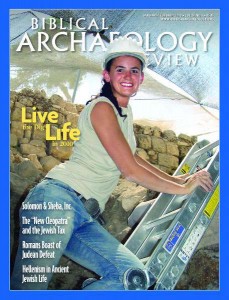
After Avraham Biran’s recent death at just short of 100 years, there was an outpouring of richly deserved praise. Not least of this was for his excavation of Tel Dan from 1966 to 1999—the longest running excavation in Israel—and the remarkable finds he uncovered there, including the famous inscription that mentions the dynasty of King David, a gate from the Patriarchal age and a horn from the altar on the bama (high place) where Jeroboam installed a golden calf as Israel’s god (1 Kings 12:28–30). There were many more exciting recoveries.
But BAR readers like to know things whole. And it is also true that Biran’s dig at Tel Dan has been criticized within the profession. In a recent issue of Tel Aviv, the journal of the Tel Aviv University’s Institute of Archaeology, archaeologist Eran Arie sought to review the stratigraphy of the Biblical periods at Tel Dan, in archaeology termed the Iron Age II (1000–586 B.C.E.).1 Eran begins his analysis this way:
Already a library member? Log in here.
Institution user? Log in with your IP address.

